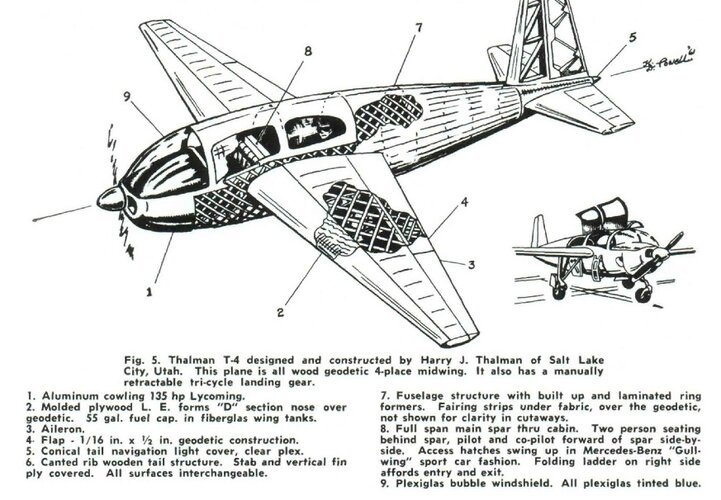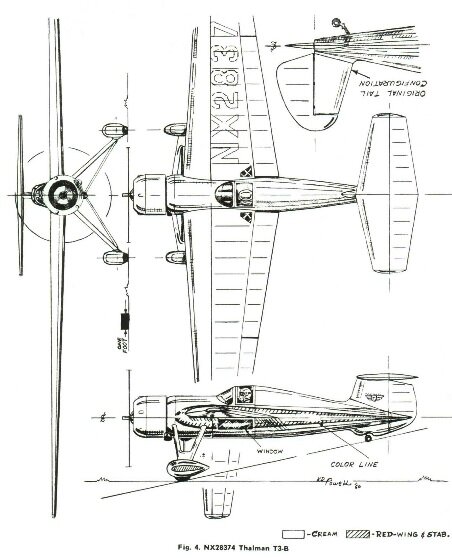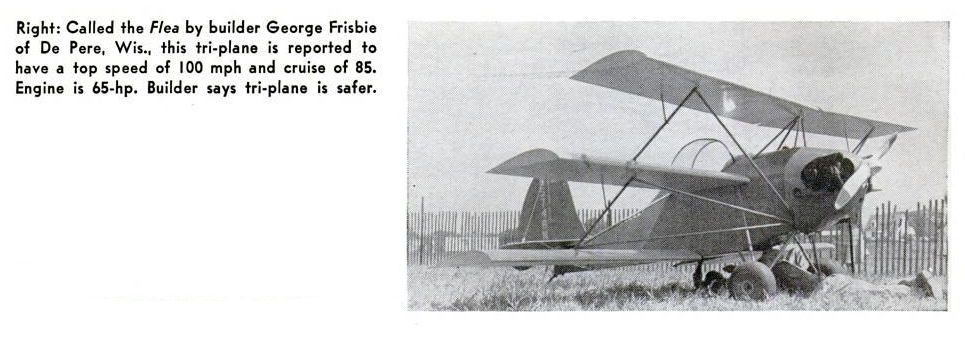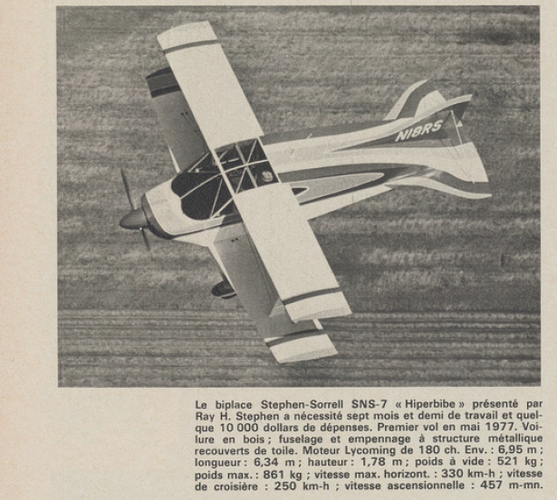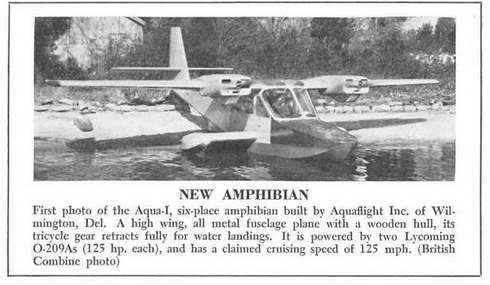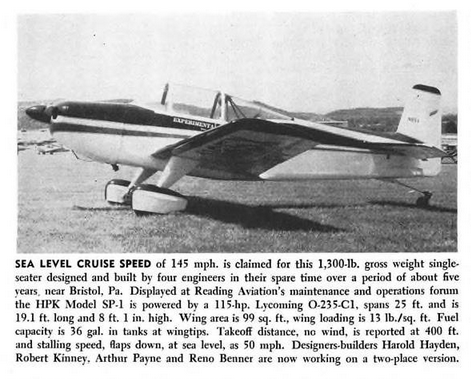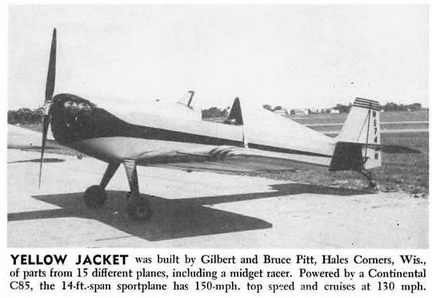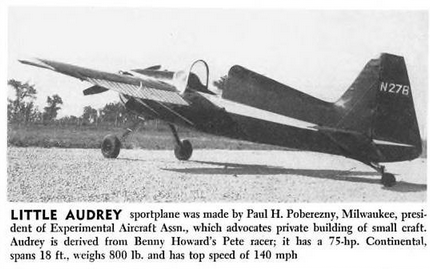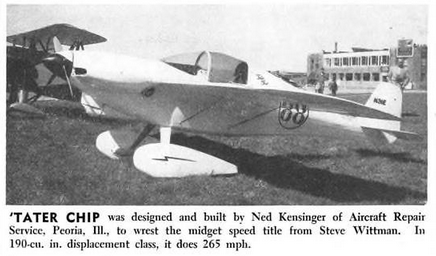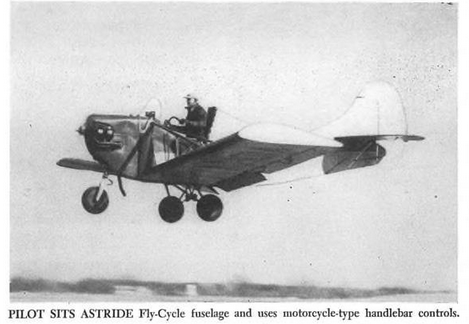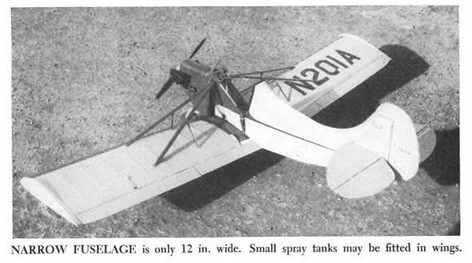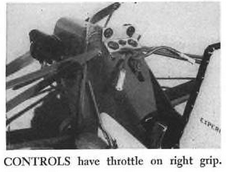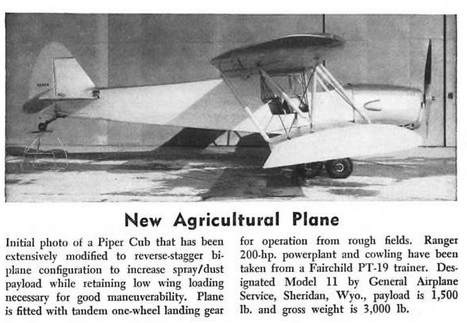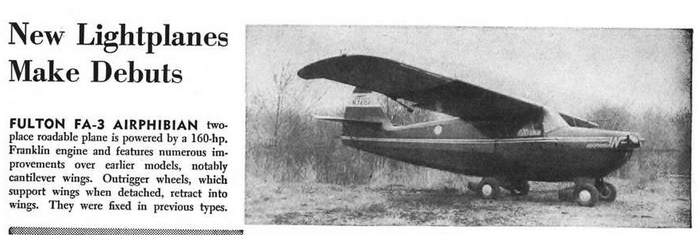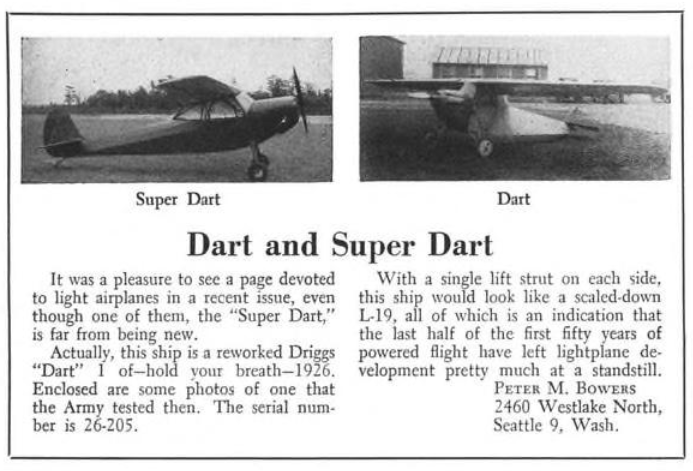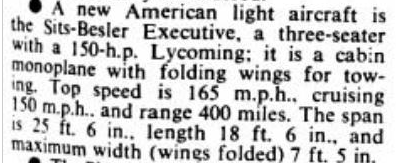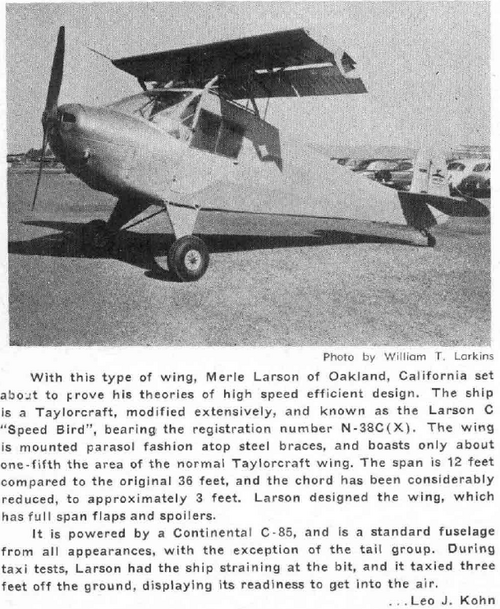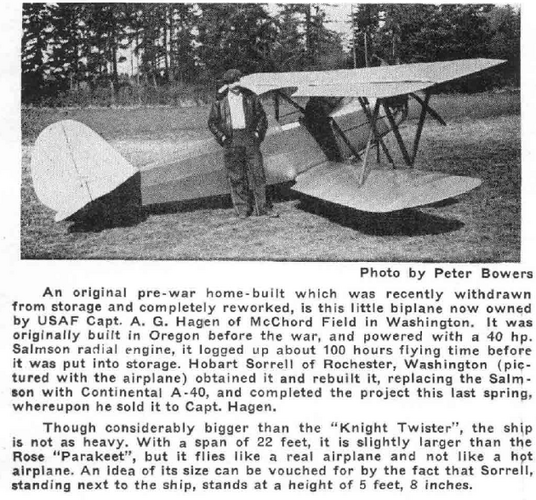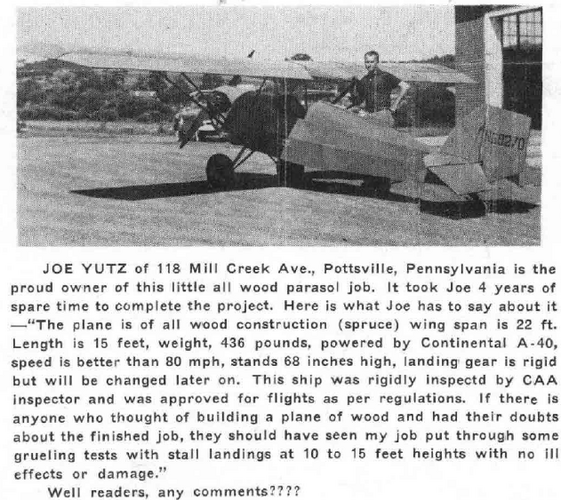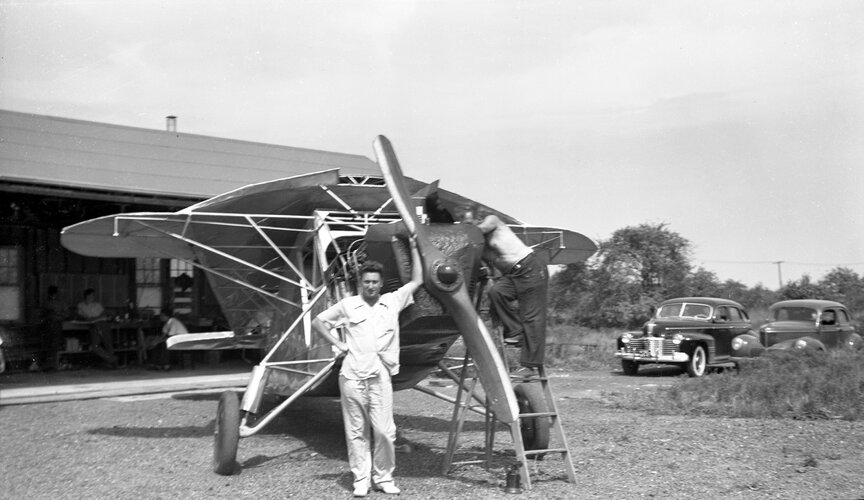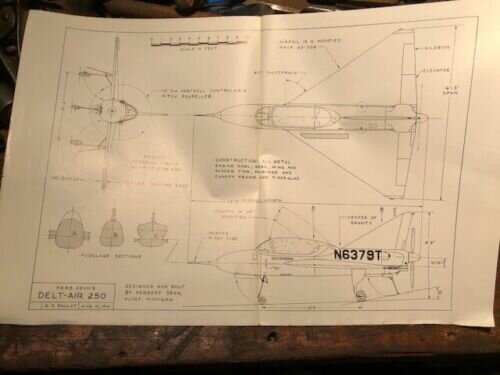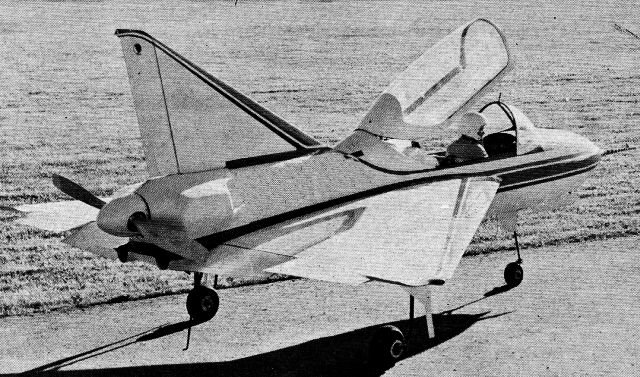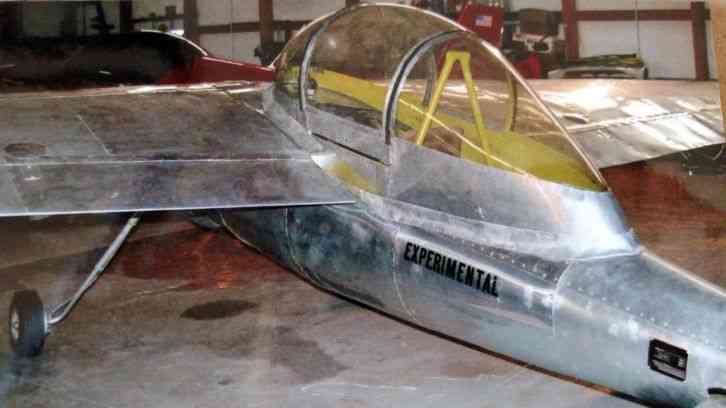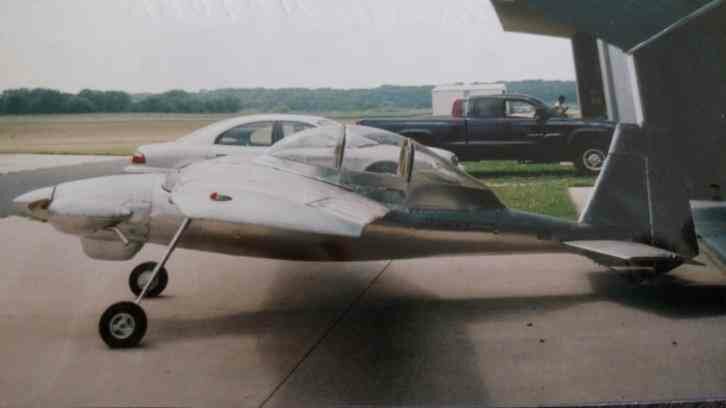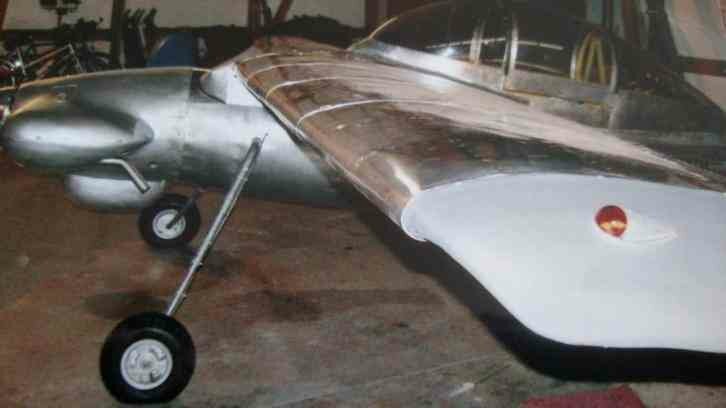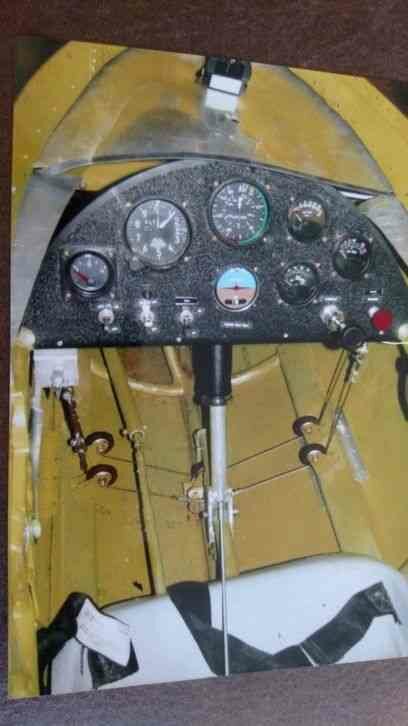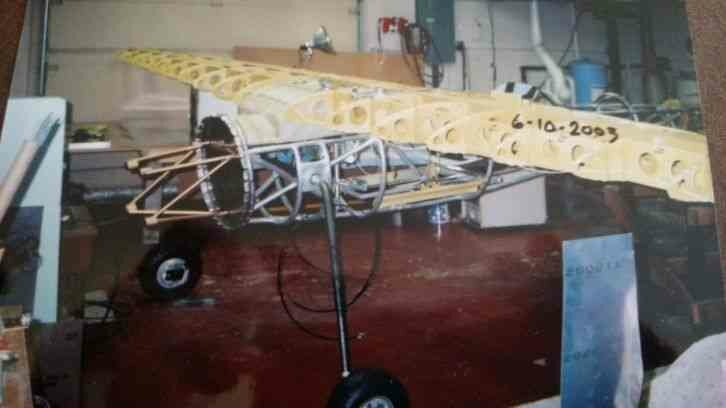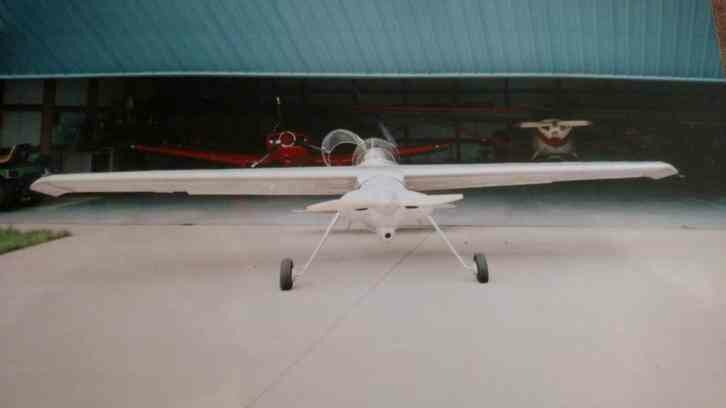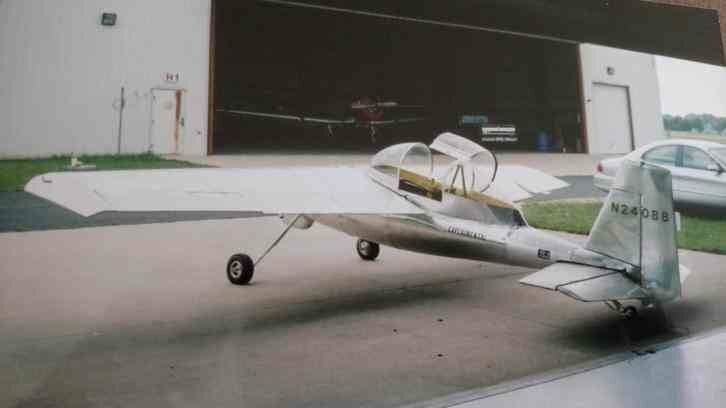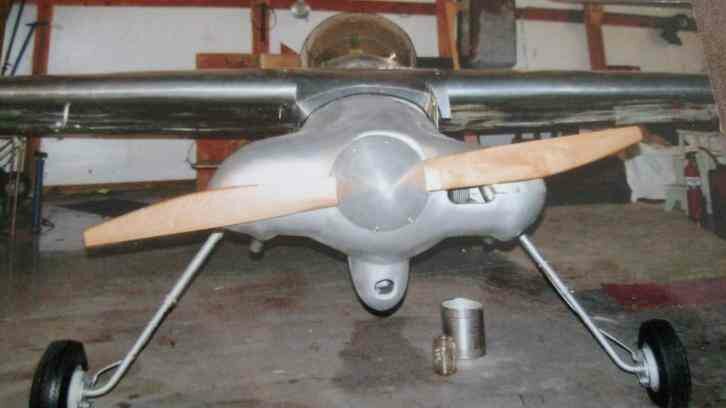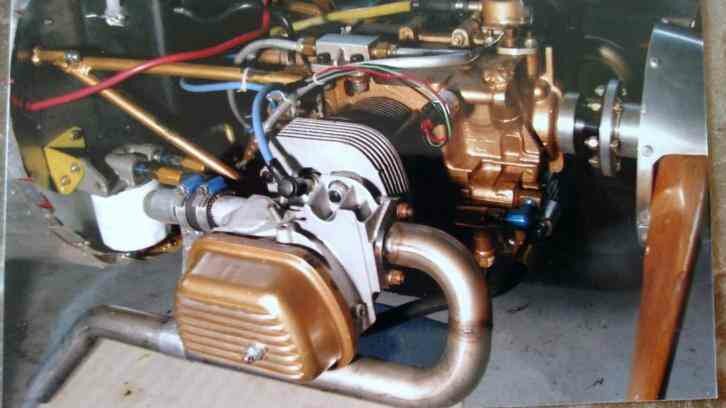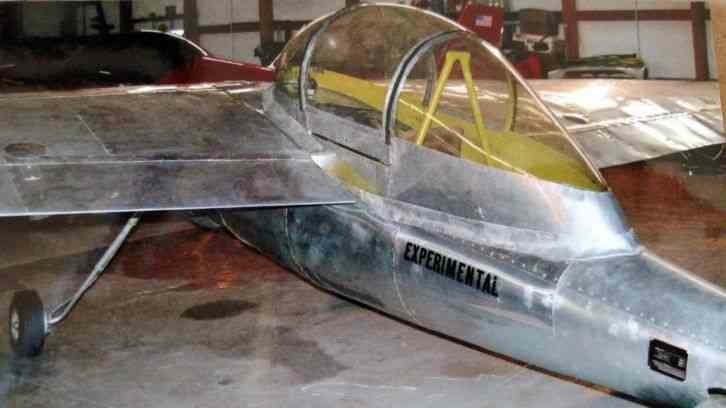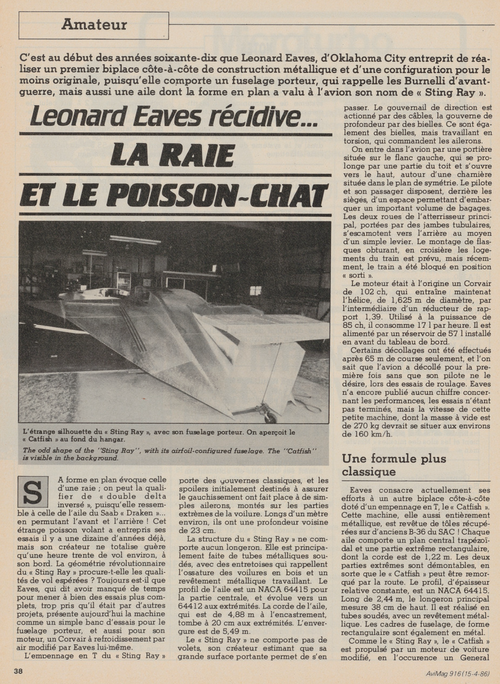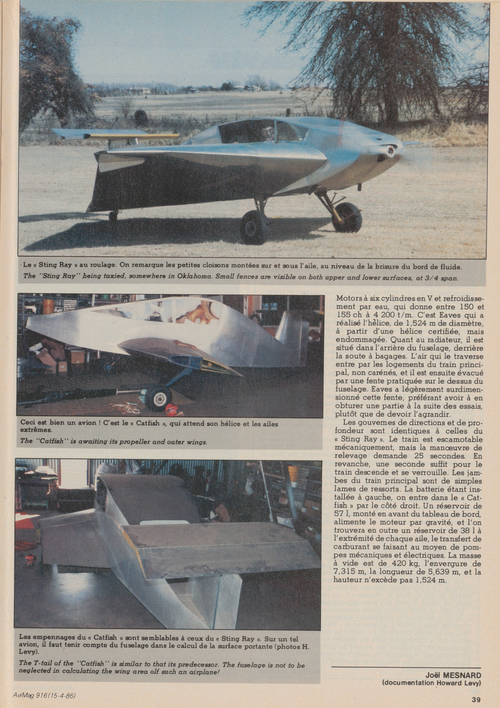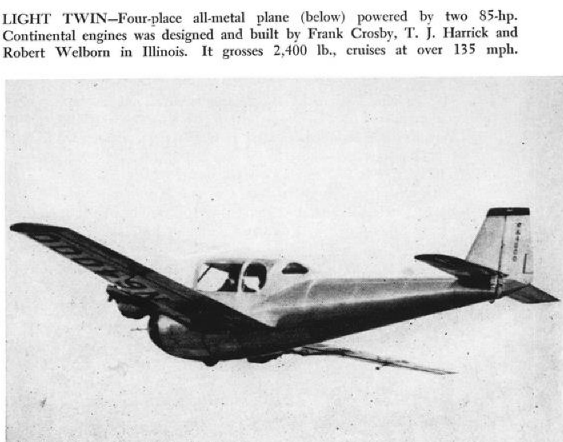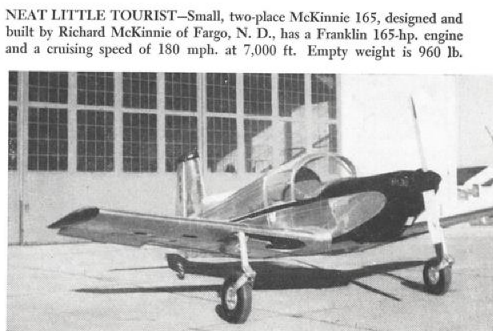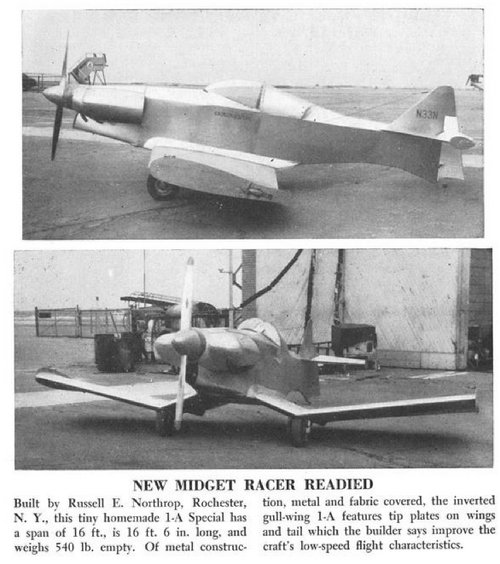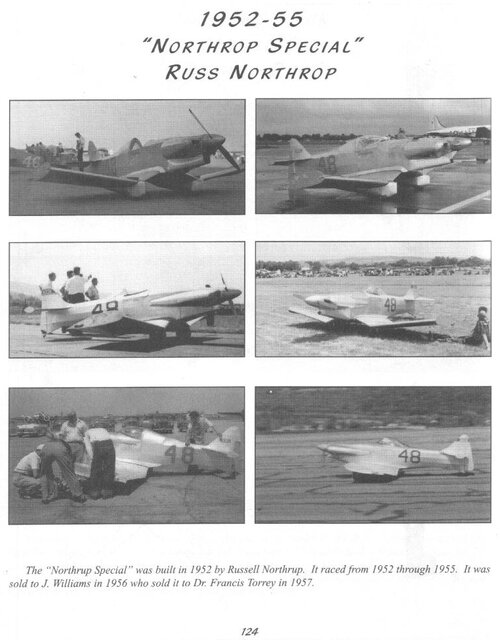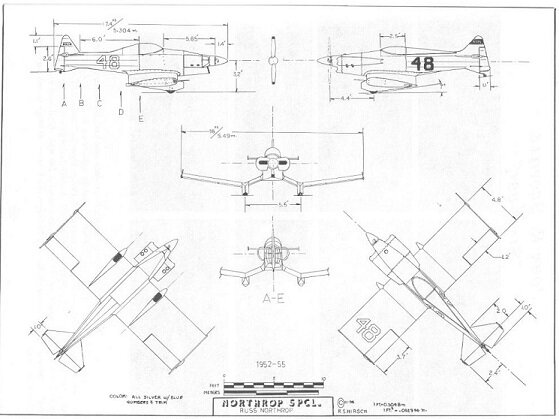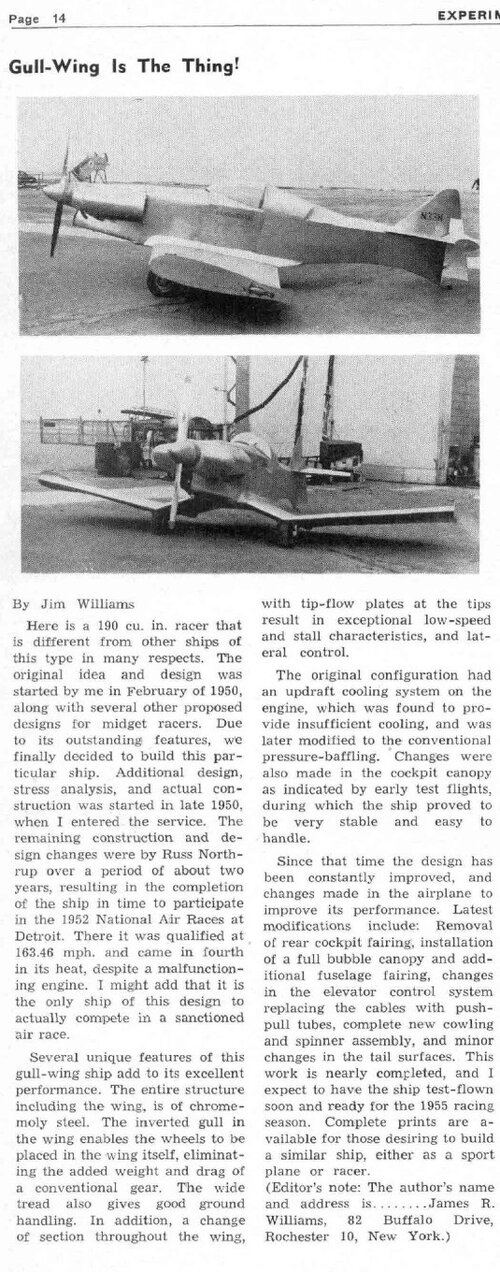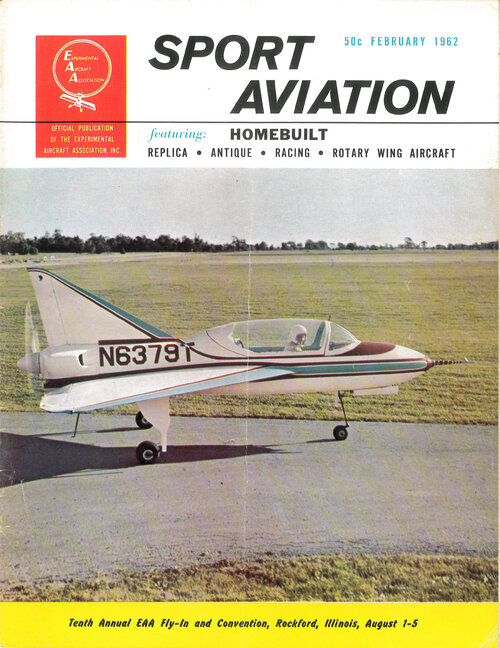here is a Thalman T-4,strange concept.
Not so strange, the T-4 followed the same wooden geodetic construction employed by Harry J. Thalman [1] and William Earl Player when they helped form Plxweve Aircraft. [1] (Construction techniques followed those of Thalman's Oregonian mentor, George Yates - bending strips of cedar around heated former moulds.) While fellow Mormon, Player, designed both parasols and low-winged aircraft, Thalman favoured mid-wings - as on his single-seat T-3/T-3B. In general construction technique, the T-3 and T-4 were similar - the T-3 being fabric-covered, the T-4 having a fibreglass covering.
Attached is a cutaway drawing from
Sport Aviation, 22 August 1961, pg.22
Thalman and Player were joined by a third geodetic aircraft builder - John Greenleaf of Portland, OR, to form the Plxweve Aircraft Company in 1940. [2] Greenleaf then arranged financing through Ralph Hemphill of Los Angeles. As a result, the Plxweve Aircraft Co. became a division of another Hemphill-controlled firm - Aero Industries Technical Institute, Incorporated (Aero ITI). Ralph Hemphill became President of the Plexweve division but refused further investment. The money was run through quickly and much legal wrangling ensued.
--
https://caselaw.findlaw.com/ca-court-of-appeal/1793783.html
What followed is confusing. Plxweve's CT-6A monoplane (NX19994) is referred to either the Greenleaf CT-6A or Player CT-6A. Jane's infers that Greenleaf was the company name but I find no other record of such a firm. At some point, the partners went their separate ways. In 1949, Harry formed Thalman Aircraft Inc. at Salt Lake City. In the same year, he designed the Talman T-4 which, AFAIK, flew in 1951. [3] Convinced that serial wooden geodetic construction would be less expensive than by-then conventional metal construction, Thalman spent the next decade trying to get the T-4 into production. At one point, Thalman approached the Cache Chamber of Commerce in Utah for start-up funds of $50,000 (and a suitable workspace) to launch T-4 production - presumably near Logan, UT. The Chamber passed.
By 1957 Thalman Aircraft Corp. had relocated to Mount Pleasant, UT, with plans to establish T-4 production there. In a letter to
Flying Magazine (March 1957, pages 6 & 8), Mount Pleasant resident Rex C. Staker [4] writes that the production T-4 was to be offered with 150-, 170-, or 180 hp engines. According to Aerofiles, Thalman Aircraft also took over a concept from Van Nuys-based ATS (Aircraft Technical Services Inc., Floyd E. Snow) in 1959. That ATS design was described as a 4-place mid-winged cabin monoplane ("reportedly 50 percent complete"). If I understand correctly, Thalman Aircraft then began reworking this laminar-flow winged design as a "twin-engine development". Our Harry seems to have been getting a bit distracted.
By 1960, Thalman Aircraft Corp. was doing business as Thalman Industries (sometimes given as Thalman Aircraft Industries). However, the firm was now planning to relocate to Roseburg, OR - 900 miles to the west. Roseburg businessman Lynn Andreas had become president and it was Andreas who was announcing the construction of a new factory on 5 acres of leased land at the Roseburg municipal airport. Early reports said that site ground preparation work had begun and that a "plywood plane" would be built. [4] Harry Thalman is quoted, saying that his aircraft will sell for less than $14,000. [5]
According to local media reports, [6] the production type's structure - under its fiberglass shell - would be an aluminum honeycomb. [7] That jives with an article in
Sport Aviation August 1961 -
Geodetic Aircraft Structure by Keith D. Powell, EAA. On page 22, Powell writes that Thalman was "now working on another midwing featuring a plastic bonded honeycomb sandwich airframe." Reportedly, circa 1958, Harry began losing interest in geodetic structures Still, the move to aluminum honeycomb seems odd. Lynn Andreas was also president of the Oregon Red Cedar Co. As such, you would think that he would have a stake in retaining Thalman's usual wooden construction. This change may suggest that Harry Thalman had that commonest of inventor's problems - a tendency towards endless tinkering.
Contemporary reports say that Thalman was "working on a fifth model which will include a number of modifications, such as a more powerful motor, sweptback tail assembly, and electrically-operated landing gear and flaps." These all sound like sensible updated for a production variant. But the
The News-Review report says that an "all-hydraulic retractable landing gear" was to equip the production type. [8] Perhap more of Harry's tinkering? Needless to say, that Roseburg factory never materialized. I've misplaced the reference but, in the early '60s, some airport was holding the parked Thalman T-4 until storage fees in the order of $800 were paid. Obviously Harry was skint.
By 1963, Harry Thalman was working as a mechanic for Kelsey-Ellis Air Service at Salt Lake City Airport. The T-4 was in storage (and possibly disassembled by then) but Harry was still flying the T-3B. On 15 March 1963, Harry was doing flying cross-country when he flew into a blinding snowstorm. Harry Thalman died instantly when he crashed his T-3B monoplane in a gully outside of Grantsville, UT.
_____________________________
[1] Harry J. Thalman: born 25 March 1911 at Challis, Idaho; died 15 March 1963.
[2] The connection between the three men was probably wooden geodetic construction pioneer, George Yates of Beaverton, OR. Thalman, at least, took instruction from Yates. And Yates' partner, Alland D. Greenwood would also later be involved with the Plxweve Aircraft Company. I'll do more on George Yates later.
[3] Not 1953 or 1957 as is sometimes reported. Another sources claims that the T-3 was the first product of Thalman Aircraft. Not so. The T-3 had first flown back in 1941 (suggesting that Thalman was, at this early date, already drifting away from Player and Greenleaf).
[4] I can find no direct connection between Rex Clay Staker and Thalman Aircraft. Perhaps Mr. Staker (later listed as an insurance agent) was simple a proud citizen of Mount Pleasant?
[5]
Statesman Journal,
Plane Factory Is Planned At Roseburg, Salem, OR, 31 July 1960, page 2.
[6]
The News-Review,
Roseburg Aircraft Plant Proposed, Roseburg, OR, 12 April 1960, page 7.
[7] In earlier work, Thalman apparently incorporated some paper honeycomb in construction.
[8]
The Eugene Guard,
U2 of the Upper Umpqua, Eugene, OR, 26 July 1960, page 22. Apparently, reporter Jerry Uhrhammer was taken with the T-4's comparatively long span and tried to make a bizarre tie-in with the Lockheed U-2 spy plane (then in the news).

